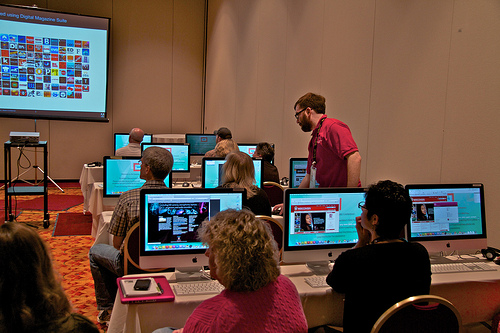Introduction
What would your ideal composition classroom look like?
Take a moment to imagine it. With the image planted firmly in your mind, answer the following question: what technological support woud exist inside your fantasy classroom?
Would it have a digital projector and a solid wifi connection? Maybe a Smart Board, computers on every desk, and a laser printer (with limitless paper and toner)? Or perhaps a server dedicated to multimodal composition projects?
The “perfect” level of technological support for a given classroom is clearly influenced by pedagogy and curriculum. In an ideal world, every classroom would come equipped with exactly what an instructor needs to support their pedagogy. Unfortunately, that is rarely the case.
All too often an instructor--particularly an adjunct or part-time lecturer--walks into a classroom and only then has to reconcile their pedagogy with the available resources.
Considering this, what happens when an instructor's high-tech pedagogy simply cannot (or will not) be supported by the resources of their institution? Furthermore, what should the instructor do when their requests for support are ignored or denied? Should they scrap their carefully designed lesson plans? Or should they instead try to make do with the limited resources available?
This webtext hopes to examine methods for bringing a high-tech pedagogy to a low-tech classroom. This site is organized into the following sections:
- Digital Literacy in the Composition Classroom reflects on my pedagogy and belief in the importance of digital literacy in the composition classroom.
- My Story tells an autobiographical story of my experiences as an adjunct being assigned to a classroom lacking technology at a two-year college.
- Course Objectives describes my original course goals for the class at the aformentioned institution.
- Solution Overview and Problems and Solutions outlines my specific solutions to several unique problems posed by the low-tech classroom.
